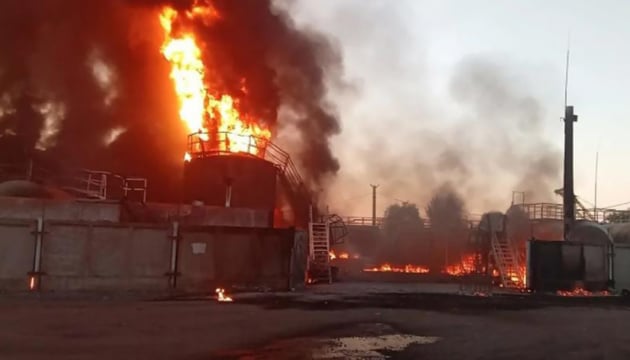Ukrainian Drones Shift the Balance: How a Series of Strikes on Russian Oil Refineries Disrupts the Kremlin’s Seasonal Plans
14 November 16:42
Over the past three months, Ukraine has sharply intensified its attacks on Russia’s oil refining infrastructure, and this is having a significant impact on a sector that the Kremlin has long considered one of its most protected.
According to Bloomberg, since the beginning of August, Ukrainian drones have attacked Russian refineries almost 40 times, almost twice as many as in the previous seven months of the year. This exceeds the total number of attacks over the past year, reports "Komersant Ukrainian".
Refining drops below normal
According to the International Energy Agency, Russia is entering 2025 with a noticeable drop in refining – about 4.9 million barrels per day, which is historically less than the usual 5.3-5.5 million in the first months of the year. Despite Russian officials’ claims that the situation is under control, drone strikes have been a key factor in slowing down the refineries.
Although Reuters reported that the overall decline in refining this year could reach only 3%, the industry is increasingly having to use reserve capacity and conduct unscheduled repairs as a result of the strikes, which affect both logistics and critical equipment.
Paradoxical dynamics of fuel prices
Amid energy pressure on the infrastructure, Russian drivers have seen gasoline prices fall for the first time in more than a year. The Federal Statistics Service recorded a 0.2% decline between November 6 and 10. The price drop was recorded in six of the eight federal districts.
Bloomberg attributes this to a seasonal decline in demand and the partial resumption of refinery operations after repairs and response to the attacks. At the same time, the media emphasize that the rise in fuel prices in previous months was directly related to the Ukrainian strikes, which pushed prices to annual highs.
What does this mean for the Russian economy?
- Falling refining volumes mean a reduction in exports of petroleum products, one of Russia’s key sources of foreign exchange earnings.
- The use of reserve capacities during military tensions reduces the industry’s maneuverability.
- Repairs after strikes become regular and force the government to reallocate resources.
For Ukraine, this is part of a strategy to deplete the Russian military economy. According to the SBU, more than 160 oil production and refining facilities have been hit since the beginning of the invasion.
The scale and geography of attacks are growing
In September-October alone, 20 facilities were hit, and one of the most notable attacks in the Black Sea region resulted in a fire on an oil tanker and damage to facilities in the port of Tuapse, where one of Rosneft’s key plants operates.









